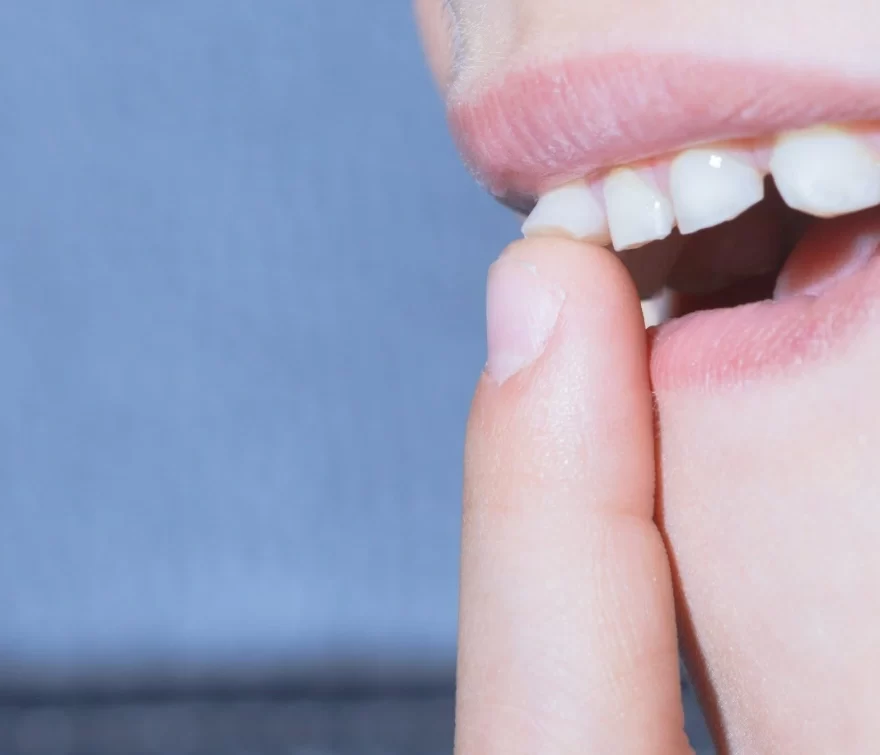A loose front tooth can be a source of worry and even embarrassment. It can affect your speech, your ability to chew comfortably, and of course, your confidence. But don’t panic!
This guide will equip you with all the knowledge you need to understand what’s causing the issue and how to get your smile back on track.
The Culprits Behind the Wobble
Front teeth rarely loosen up for no reason. There are several internal and external factors that can contribute to this problem. Let’s delve into the most common ones:
Periodontal Disease: This bacterial infection is a major culprit. It attacks the bone, soft tissues, and gums, causing the gums to recede and teeth to loosen. Keep an eye out for warning signs like bad breath, bleeding gums during brushing or flossing, and inflamed gum
tissue.
Trauma: A fall, a sporting injury, or even a bump to the face can damage the tissues that hold your teeth in place. While some injuries may heal on their own, it’s crucial to see a dentist for a thorough evaluation to avoid further complications.
Clenching or Grinding: Do you find yourself clenching your jaw during stressful situations or grinding your teeth at night? This can have a similar effect to trauma, damaging the teeth and surrounding tissues, leading to loosening. Don’t hesitate to visit your dentist – they
have solutions to help manage this condition.
Pregnancy: Hormonal changes can play a temporary role in tooth loosening. Pregnancy hormones like oestrogen and progesterone can loosen ligaments and bones in the jaw. This usually resolves after childbirth, but a dentist’s check-up is still recommended for peace of
mind.
Osteoporosis: While commonly associated with the hips and spine, osteoporosis can also weaken the jawbone. Studies have shown a link between bone loss and an increased risk of periodontal disease, potentially leading to loose teeth.
When to See Your Dentist
Don’t delay! As soon as you notice a loose tooth, contact your dentist. Early intervention is key to prevent further damage to the gums, jawbone, and even potential infection. Here are some additional symptoms that warrant a prompt visit:
- Persistent headaches.
- Significant tooth pain.
- Excessive tooth mobility or numbness.
- Bleeding, inflamed, or red gums.
- Pus in your mouth.
Treatment Options: Restoring Stability to Your Smile
The best course of action depends on the severity of the situation and how quickly it’s addressed. Here’s a breakdown of potential treatments, both surgical and non-surgical:
Non-Surgical Solutions
Deep Cleaning: This is an excellent option if your loose tooth is due to poor oral hygiene or periodontal disease. The dentist will remove the infection causing gum recession, allowing the gums to heal, tighten, and stabilise the tooth.
Splinting: If trauma is the culprit, splinting might be the answer. This involves bonding the loose tooth to surrounding teeth for support, providing extra stability while it heals.
Surgical Solutions (in severe cases)
Extraction: In scenarios where saving the tooth isn’t possible, extraction will be necessary. This is followed by tooth replacement options, like implants, to restore function and aesthetics.
Tissue/Bone Grafting: This procedure is typically used for patients with gum disease and weakened bone around the loose tooth. The dentist grafts tissue or bone to promote regeneration in the affected area, providing a stronger foundation for the tooth.
Periodontal Flap Surgery: This is for severe cases of periodontal disease with deep gum pockets and significant tartar build-up. The dentist lifts the gums to remove tartar and then repositions them in a tighter position, securing the teeth and preventing further loosening.
Taking Care of Your Smile: Prevention is Key
By following a good oral hygiene routine, you can significantly reduce your risk of experiencing loose teeth:
- Brush your teeth twice a day for two minutes each time, using a soft-bristled brush and fluoride toothpaste.
- Floss daily to remove plaque and food particles from between your teeth.
- Schedule regular dental check-ups and cleanings, typically every six months. This allows your dentist to identify and address any potential problems early on.
- Maintain a healthy diet that limits sugary foods and drinks, which can contribute to tooth decay and gum disease.
A Final Note: A Loose Tooth Doesn’t Have to Mean a Lost Smile
By understanding the causes of loose teeth and seeking professional dental help promptly, you can take control of the situation and restore your smile’s strength and confidence.
Remember, prevention is always better than cure, so maintain a good oral hygiene routine and schedule regular dental check-ups. A healthy mouth is a happy mouth!















